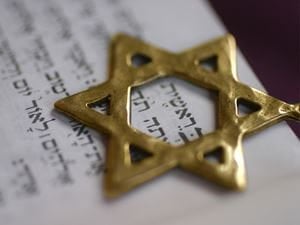
On the 14th of May in 1948, a man named David Ben-Gurion, soon to be Prime Minister, established the State of Israel, rebuilding the homeland of the Jews—a people who which had been exiled for nearly 2,000 years, subject to persecution, abuse, and in the years prior, the horrors of the Holocaust. That day is now celebrated as Yom Ha'atzmaut—the Israeli Independence Day.
On this date, members of the provisional government read and signed a Declaration of Independence in Tel Aviv, about 8 hours before the end of the British Mandate of Palestine. Soon after, this new state was officially recognized by the United States, as well as many other countries around the world. Israel was officially admitted as a member of the United Nations on the 11th of May in 1949.
The Jewish people had come home for the first time since King Nebuchadnezzar II of Babylon exiled them in 586 BCE.
This Israeli Independence Day is celebrated on the 5th day of lyar. This is according to the Hebrew calendar rather than the Georgian calendar the Western world is familiar with. If the 5th falls on a Friday or Saturday, the holiday is moved to the preceding Thursday, and if this day falls on a Monday, the celebration is put off until Tuesday to avoid violating Sabbath laws.
This is a day marked by ceremony and celebration—not only in Israel, but everywhere in the world where Jewish communities exist. Few outside of these communities, however have heard of Yom Ha'atzmaut, so let’s shed some light on how this important holiday is celebrated.
Independence Day Eve
Yom Ha’atzmaut is preceded by Yom Hazikaron, which is Israel’s Memorial Day for the soldiers who died defending Israel’s independence. On this day, all places of public entertainment close for 24 hours, and at 8 a.m. and 11 a.m., a siren is blared throughout the country, during which all of Israel observes 2 minutes of quiet. Radio and television programs, during this time, broadcast stories of fallen soldiers who lost their lives in recent decades.
On the evening before Independence Day, a ceremony is held on Mount Herzl in Jerusalem, which includes a speaker from the Israeli Parliament, musical performances, and the ceremonial lighting of 12 torches, each representing one of the Tribes of Israel.
A few minutes after sundown, the somber tone turns celebratory as many Israeli cities hold outdoor performances featuring popular entertainers, as well as fireworks displays. Streets are often closed off in order to allow revelers to dance, and the national flag is raised from half staff to its full height.
The eve of Yom Ha’atzmaut is a somber time followed by the beginnings of festivities that put the country in a celebratory, yet thoughtful mood.
Independence Day
On the day of Yom Ha’atzmaut, the President of Israel gives a speech commemorating the day as soldiers representing the branches of the Israel Defense Forces parade, flags held high.
Other events include the International Bible Contest in Jerusalem, a competition on the Jewish Bible for middle and high school students, and the Israel Prize ceremony for those who have contributed to the humanities, sciences, and the arts.
On this day, the Israel Defense Forces opens a few of its bases for public tours, as well, displaying their most recent and impressive technological achievements.
Aside from official events, Israeli families celebrate the day with barbeques and picnics known as mangal—Arabic for “stove,” and Israeli flags, with their two horizontal blue stripes and Star of David, hang from balconies and car windows.
Each of the major cities of Israel celebrates Yom Ha’atzmaut in a unique way. In Jerusalem and Tel Aviv, for instance, crowds gather to watch large public shows, while in rural areas, many spend time dancing to Israeli folk music, going on camel rides, and enjoying craft activities such as face painting.
This is a time for Israelis to celebrate the State of Israel, itself, celebrating a homeland that, until 1948, had existed only as a dream.
Customs and Traditions
The Chief Rabbinate of the State marks Yom Ha’atzmaut as a day in which Hallel—Psalms of Praise—should be recited, similarly to other joyous Jewish holidays. While some Israelis hold to the idea that Independence Day is a purely secular holiday, others embrace the recitation of a variety of special prayers, such as Al HaNissim—Concerning the Miracles.
A minority of rabbis feel that this holiday belongs in the same tradition as Hanukkah and Purim, since all three of these holidays celebrate a miraculous victory of the Jews over a superior enemy.
Jews all over the rest of the world, America included, celebrate this holiday in solidarity with the State of Israel, and to demonstrate their connection to their spiritual homeland. This is one of the few days that brings together Jewish organizations of different denominations in mutual celebration.
Because this is still a relatively new holiday, there is no deeply established tradition concerning how it is to be celebrated. There is, however, most definitely a theme to this day—unity in the celebration of a homeland restored after thousands of years of exile.
Legacy
The formation of the modern state of Israel represents the most significant collective effort of the Jewish people of the modern age, bringing them the dignity and independence that they lacked for thousands of years. The very idea that this people and their culture survived for so long, enduring the worst of hardships, is miraculous, indeed.
There is some level of controversy surrounding the holiday—reports of the mistreatment of the Palestinian people, during the Israeli fight for independence, who had resided in the land for centuries abound. This conflict between the two people continues to this day.
And so this holiday takes on a new level of meaning—it is a time for Israelis to consider the place of Israel in the world, and what their vision is for their country and people.
But whatever that place and purpose is, the reason for celebration is clear. The Jewish people have re-forged their home, and this wandering people can now finally rest.

